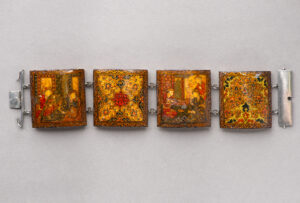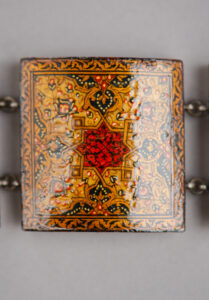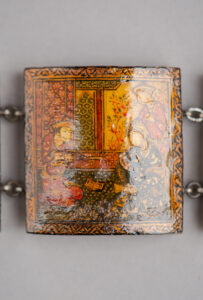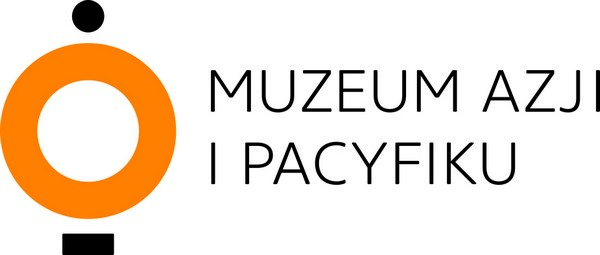Bracelet from Iran
Each month, the curators of the Asia and Pacific Museum carefully select one object to represent the second part of the permanent exhibition Journeys to the east, which will cover the areas of Central and Eastern Asia, South Asia, Southeast Asia, East Asia and Oceania.
In March, the object of the month is a bracelet that was created in the first half of the 19th century in Iran. It was made of small plates of animal bone, probably buffalo bone. Four different miniatures are painted on the tiles – two figural scenes and two floral and geometric motifs.
Even though the side length of each tile is only 3.7 cm, the artist who made the miniatures managed to fit complex compositions into a tiny frame. Precisely painted details attract attention, e.g. tiny flower petals, patterns on fabrics, or facial features of one of the characters. The eye is marked here with an extremely thin and precise line. This line was probably made using a single-bristled brush.
We can guess that in the past, all 5 figures visible in the miniatures had their eyes, noses, and mouths painted so precisely. Today, the four characters have completely smoothed-out faces. It is possible that the paint in these places was scratched off under the influence of the Islamic ban on depicting images of people. However, this theory is contradicted by a certain lack of consistency – if the characters’ faces were removed on purpose, it would apply to all five images, not just four.
The second theory is related to the painting technique. It is possible that the artist applied a thicker layer of paint in these places while painting all the small elements of the face. As a result, these slightly convex fragments of the miniatures were more susceptible to mechanical damage and crumbled when the bracelet was used.
Bracelet
authorship unknown
Iran, first half of the 19th century
animal bone painted with gouache or tempera and covered with lacquer

![grafika z tekstem [journeys to the east]](https://www.muzeumazji.pl/maip/uploads/2022/08/baner_strona_english_tn-1140x220.jpg)





